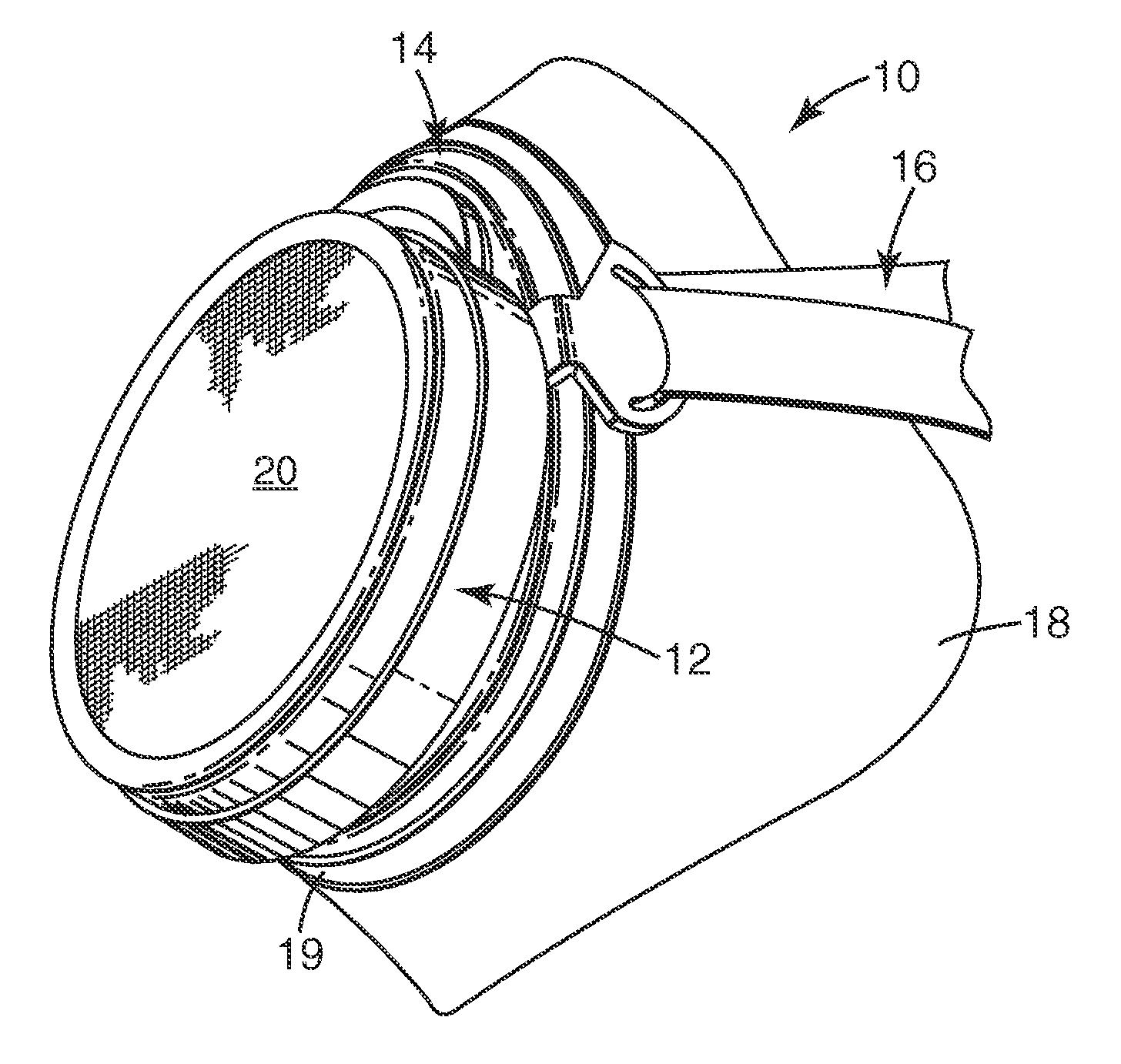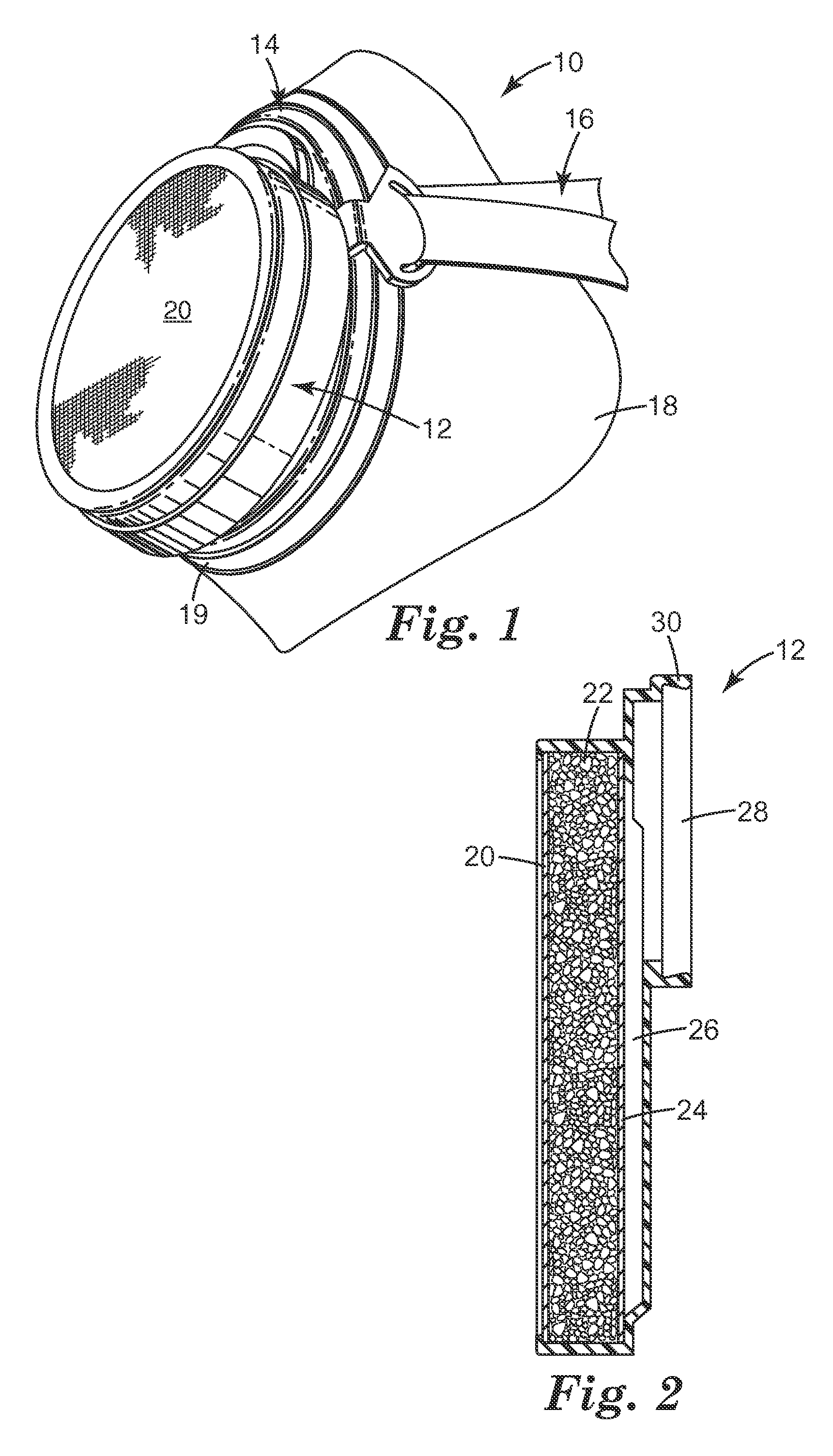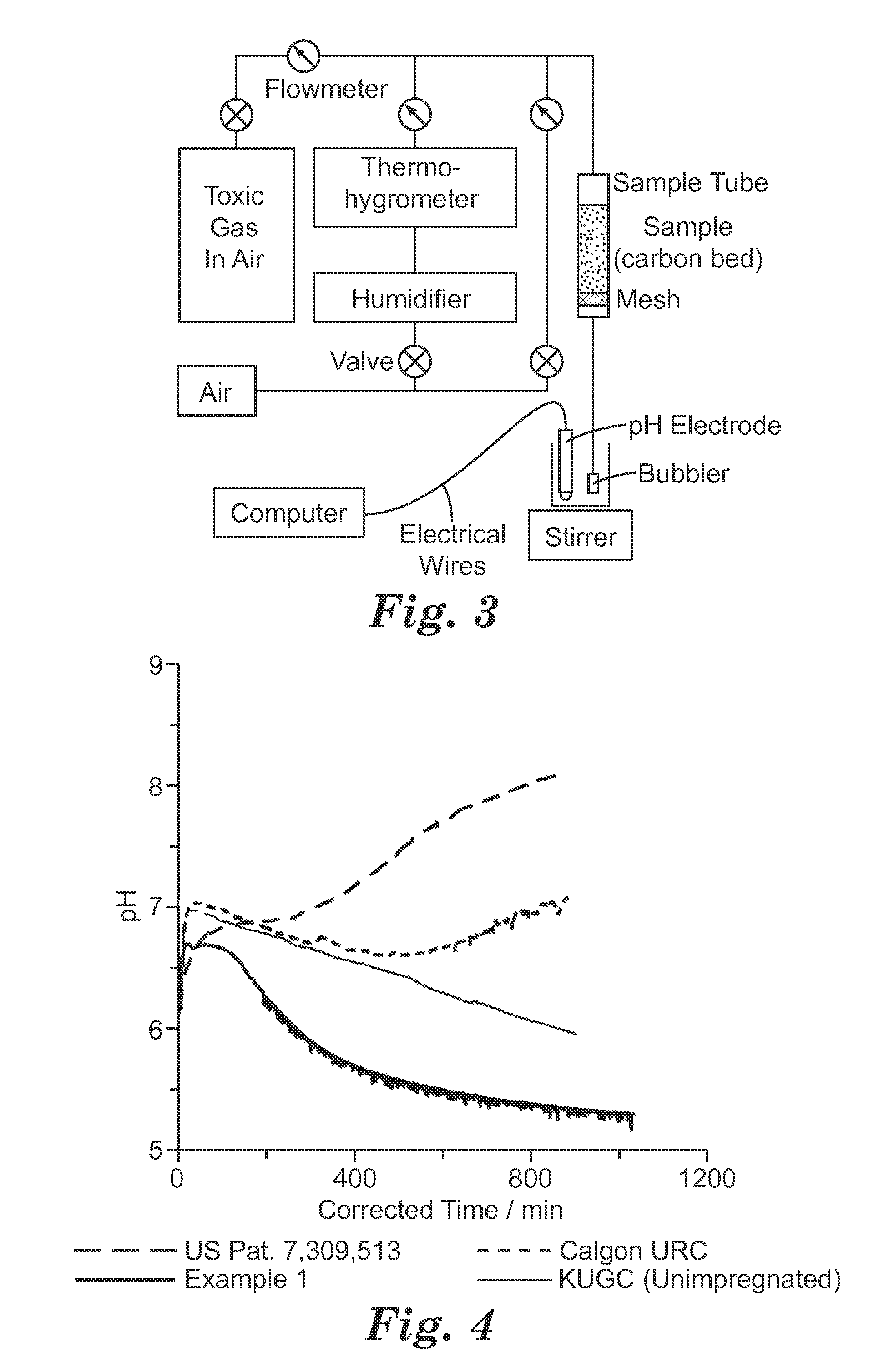Ammonia-free gaseous air filter
- Summary
- Abstract
- Description
- Claims
- Application Information
AI Technical Summary
Benefits of technology
Problems solved by technology
Method used
Image
Examples
example 1
[0083]An impregnated substrate of the present invention was produced by contacting activated carbon with an impregnating solution and drying the mixture at elevated temperatures. Activated carbon, type 12×35 Kuraray GC available from Kuraray Chemical Co., Ltd., Osaka, Japan, was used as the substrate. The final impregnation solution was prepared by mixing an acidic solution containing 4 molar (moles per liter: “M”) HNO3 in water with the metals salts to achieve concentrations of 2.4 M Cu(NO3)2 and 0.035 M H3PMo12O40.xH2O. The carbon and the impregnating solution were combined at a ratio of 1 g: 0.8 mL. This mixture was then dried in an argon atmosphere for 0.5 hours at 110° C., followed by 2 hours at an elevated temperature of 200° C.
example 1b
[0084]Example 1b was prepared similarly to Example 1 except that two steps were used. In step 1, 7 mL of an aqueous solution of 1.6M Cu(NO3)2, 0.02 M H3PMo12O40.xH2O and 4 M HNO3 was contacted with 10 g of activated carbon. This mixture was then dried in argon for 0.5 hour at 110° C. and then 40 minutes at 170° C. After drying, the impregnated sample was contacted with a further 5 mL of an aqueous solution of 1.6M Cu(NO3)2, 0.02M H3PMo12O40.xH2O and 4 M HNO3. This doubly impregnated sample was dried in argon for 0.5 an hour at 110° C. followed by 2 hours at 200° C.
example 2
[0085]Ten (10) g of Kuraray GC activated carbon was impregnated with 7 mL of an aqueous solution of 1.2 M Cu(NO3)2, 0.02M H3PMo12O40.xH2O and 0.4M CuCl2. This mixture was dried in argon at 110° C. for 0.5 hours and then 170° C. for 45 minutes. After drying, the impregnated carbon was contacted with 5 mL of a second aqueous solution of 1.2 M Cu(NO3)2, 0.02 M H3PMo12O40.xH2O and 0.4M CuCl2. This doubly impregnated carbon was dried in argon at 110° C. for 0.5 an hour, followed by 220° C. for 2 hours.
PUM
| Property | Measurement | Unit |
|---|---|---|
| Temperature | aaaaa | aaaaa |
| Time | aaaaa | aaaaa |
| Time | aaaaa | aaaaa |
Abstract
Description
Claims
Application Information
 Login to View More
Login to View More - R&D
- Intellectual Property
- Life Sciences
- Materials
- Tech Scout
- Unparalleled Data Quality
- Higher Quality Content
- 60% Fewer Hallucinations
Browse by: Latest US Patents, China's latest patents, Technical Efficacy Thesaurus, Application Domain, Technology Topic, Popular Technical Reports.
© 2025 PatSnap. All rights reserved.Legal|Privacy policy|Modern Slavery Act Transparency Statement|Sitemap|About US| Contact US: help@patsnap.com



